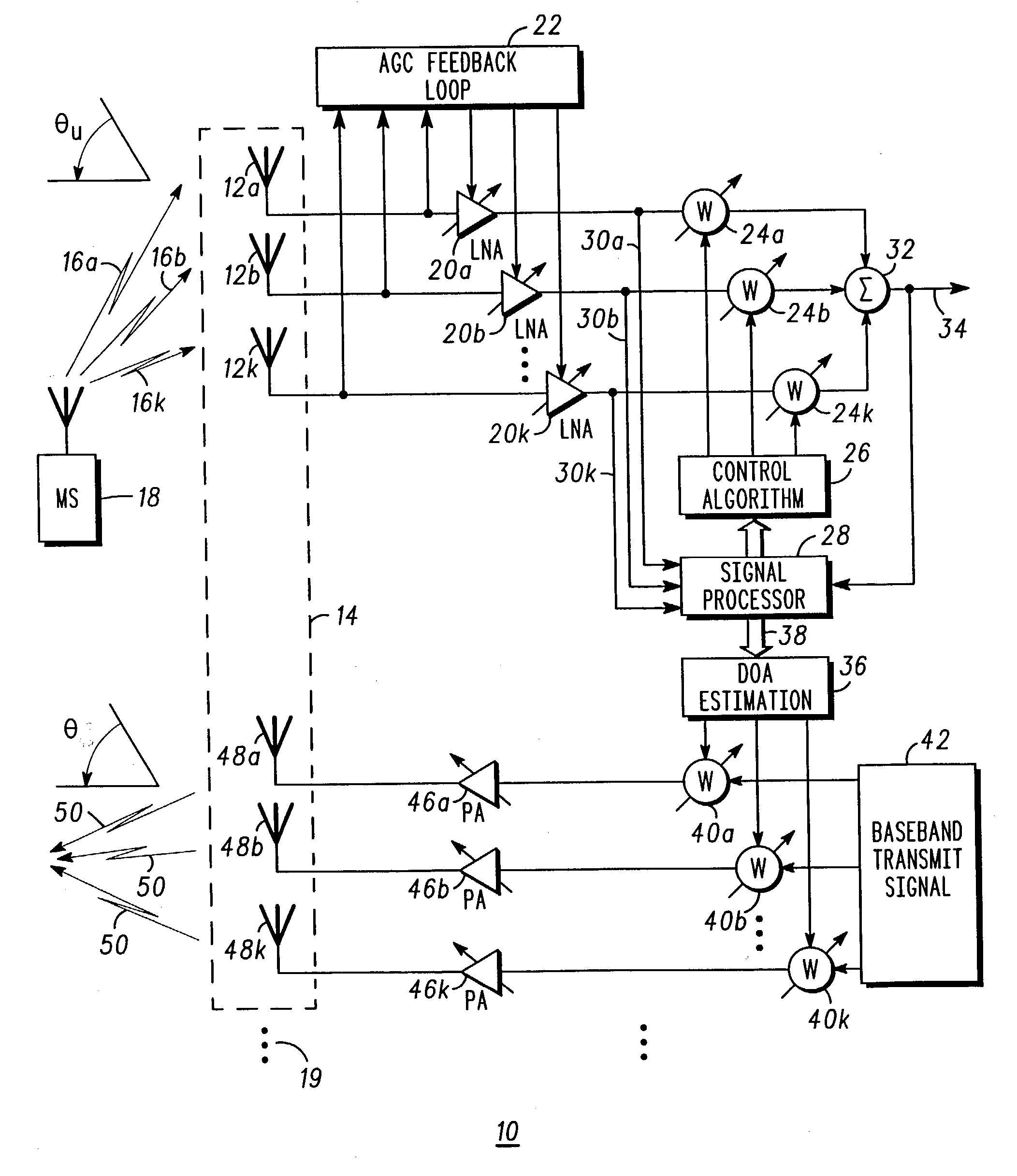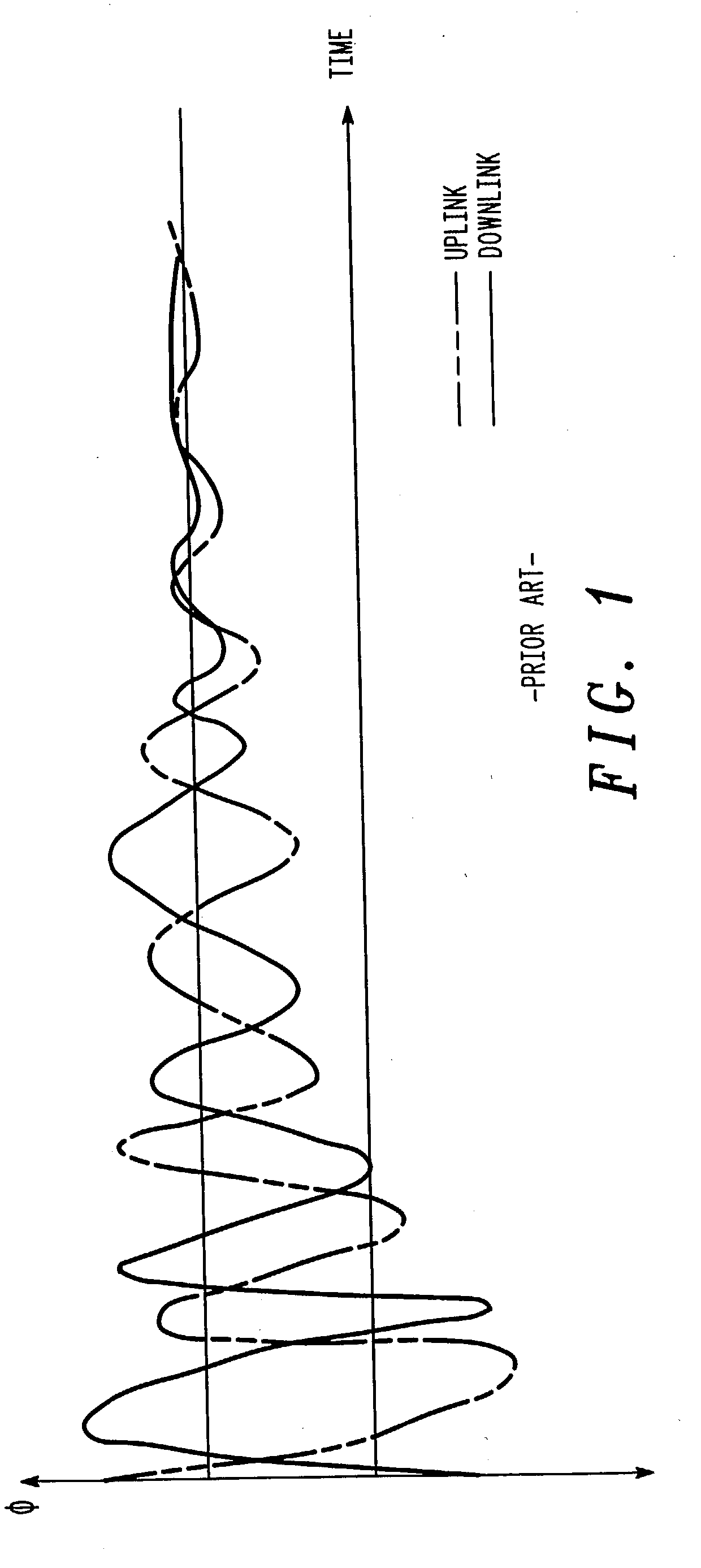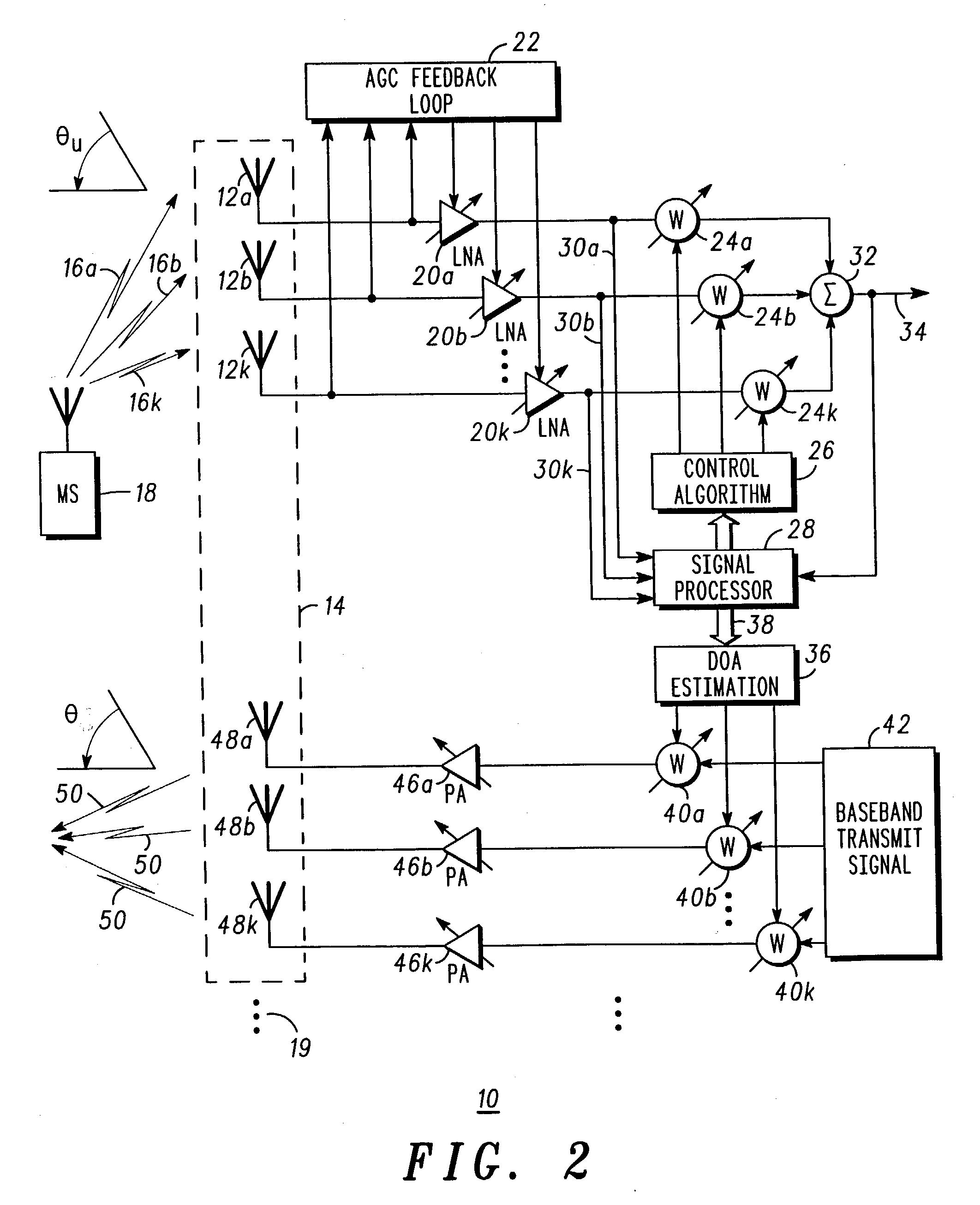Adaptive antenna array and method of controlling operation thereof
- Summary
- Abstract
- Description
- Claims
- Application Information
AI Technical Summary
Benefits of technology
Problems solved by technology
Method used
Image
Examples
Embodiment Construction
[0030] Turning to FIG. 1, there is shown a graphical representation of how directional estimates for uplink and downlink paths vary, and ultimately converge, with time. The x-axis (i.e. the abscissa) represents an averaging period and the y-axis (i.e. the ordinate) represents estimates of the uplink and downlink principal direction angle, .phi.. As can be seen, for very short averaging times (that is, the points towards the left hand side of the x-axis of the figure), the uplink and downlink directional estimates can be widely different. These differences arise from the different physical (and essentially instantaneous) propagation paths from the base station (i.e. the antenna array) to a subscriber unit and vice versa, with these differing propagation paths partially attributable to any difference in carrier frequency used to support the uplink and downlink channels. As either the averaging period or the time is increased (illustrated by movement towards the right-hand side of the ...
PUM
 Login to View More
Login to View More Abstract
Description
Claims
Application Information
 Login to View More
Login to View More - R&D
- Intellectual Property
- Life Sciences
- Materials
- Tech Scout
- Unparalleled Data Quality
- Higher Quality Content
- 60% Fewer Hallucinations
Browse by: Latest US Patents, China's latest patents, Technical Efficacy Thesaurus, Application Domain, Technology Topic, Popular Technical Reports.
© 2025 PatSnap. All rights reserved.Legal|Privacy policy|Modern Slavery Act Transparency Statement|Sitemap|About US| Contact US: help@patsnap.com



